Looking at the Cessna Citation Family, From the “Slowtation” and “Near Jet” Days to a Screamin’ Mach .935
The 7,000th Cessna Citation, originally named after a thoroughbred racehorse, was delivered on June 27, 2016. It’s a milestone that began in 1969 and 35 million flight hours later, Citation hours are now in thousands of pilots’ logbooks. From the Citation 500 parents spawned seven different distinct families, each with design improvements which has taken Citation from the “Slowtation” to the screamin’ Mach .935 Citation X+ which can fly between New York and Los Angeles in four hours.
Raising an airplane family isn’t easy, but Cessna has kept the philosophy the same for every generation. Safety, simplicity, strong product support, and increased efficiency by expanding on original designs instead of starting over from scratch for each generation. This has helped create an excellent safety record while at the same time kept operating costs down. This balance of safety and efficiency has put Citations on many charter department’s rosters and the only safety issue I see for the entire Citation line is the ability to fly single pilot on some of the models.
A Brief Rundown of the Cessna Citation Models

NOTE: Anders here. The lineage/details on the Cessna Citation Family aren’t exactly easy to nail down. There are a lot of models and variants. As mentioned, from what Erika has found, there are seven models / series that serve as the base for the various Citation aircraft. And those models / series are the 500s, 525s , 550s, 560s, 650s, 680s, and 750s. So, with Erika’s aid, I’ve arranged a listing of the various Citation aircraft, what model / series family they hail from, and a brief description. I’d like to share that here before Erika continues the discussion and expands on some of the models.
FanJet 500 – This is the original production version that was first flown in September 1969, and entered service in 1971.
Citation I (Model 500) – After improvements such as longer wingspan, higher gross operating weight, and more powerful engines were added, the previously named Citation 500 debuted as the Citation I in 1976.
Citation I/SP (Model 501) – Single-pilot version of the Citation I introduced in 1977.
Citation II (Model 550) – First certified in 1978, this variant of the Model 500 featured a longer fuselage and longer wings, more powerful engines, and more storage capacity.
Citation II/SP (Model 551) – The single-pilot version of the Citation II.
Citation S/II (Model S550) – Improved version which eventually replaced the Citation II, featured wing improvements drawn from the Citation III.
Citation Bravo (Model 550) – An updated Citation II build with new engines, landing gear, and Primus 1000 avionics.
Citation V (Model 560) – Growth variant, based on the Citation II/SP.
Citation V Ultra (Model 560) – Upgraded engines and instruments.
Citation V Ultra Encore (Model 560) – Another engine upgrade, and improved trailing-link landing gear.
Citation Encore + (Model 560) – Introduction of FADEC (Full Authority Digital Engine Control) and redesigned avionics.
Citation III (Model 650) – All new design, first certified in 1982. Larger than the Citation I/II/V aircraft, had a swept supercritical wing, T-tail, new fuselage, and turbofan engines.
Citation VI (Model 650) – Low-cost version of the Citation III, with different avionics and non-custom interior.
Citation VII (Model 650) – Upgraded version of the Citation III, with various system improvements, more powerful engines, and single point refueling.
Citation X (Model 750) – All new design, max speed of Mach .935.
Citation Excel (Model 560XL) – This version featured a shortened Citation X fuselage, the straight wings and tail of the Citation V, and new engines.
Citation XLS (Model 560XL) – Improved version of the Citation Excel.
Citation XLS+ (Model 560XL) – Introduction of FADEC, new avionics system
Citation Sovereign (Model 680) – Features a stretched version of the Excel’s fuselage, and an all-new wing.
Citation Jet (Model 525) – A mostly new design, reusing only the front fuselage of the Citation I. Comes with EFIS (Electronic Flight Instrument System) avionics for single pilot operation.
CJ1 (Model 525) – Improved version of the Citation Jet, with new avionics and increased operational gross weight.
CJ1+ (Model 525) – Improved CJ1 with new engines.
CJ2 (Model 525A) – Stretched version of the Citation Jet, with more powerful engines, longer wings, and a larger tail.
CJ2+ (Model 525A) – Improved version of the CJ2, with increased performance.
CJ3 (Model 525B) – Increases in size and performance, more powerful engines.
CJ4 (Model 525) – Improved version with a new engine, and swept wing.
Citation Mustang (Model 510) – new Very Light Jet (VLJ) with a shorter cabin. Smaller and lighter than even the Citation I.
Citation Latitude (Model 680) – Featuring a cruciform tail and all-metal fuselage.
Citation Longitude – Planned for release in 2017.
OK, now back to Erika.
The Cessna FanJet500 and Cessna Citation I

The Cessna parents have seen their Citation family grow because they have been able to be flexible and willing to change due to market pressures, re-branding efforts, competition, and refinement of aircraft design. This attention to the market has made the Citation lineage complex, recognizable, and extremely successful starting with the firstborn Cessna FanJet500 which took its first flight in 1969. The Citation, compared to the original FanJet 500 prototype, had a longer forward fuselage, repositioned engine nacelles, greater tail area and added dihedral to the horizontal tail. The engineers then increased gross weight and added thrust reversers which produced the Citation I and started the Roman Numeral progression through the generations.
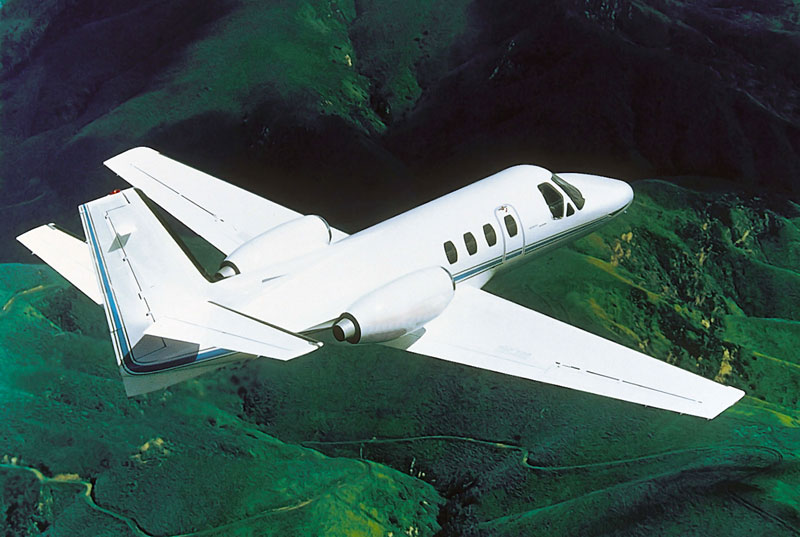
From the Citation I, engineers redesigned it with higher gross weight, JT15D-1A engines and increased the straight, iconic “Hershey Bar” wing span. With flight departments always looking for a reason to eliminate a pilot paycheck and trying to compete with twin turboprop market, the Model 501 Citation I/SP was certificated for single pilot operation in 1977.
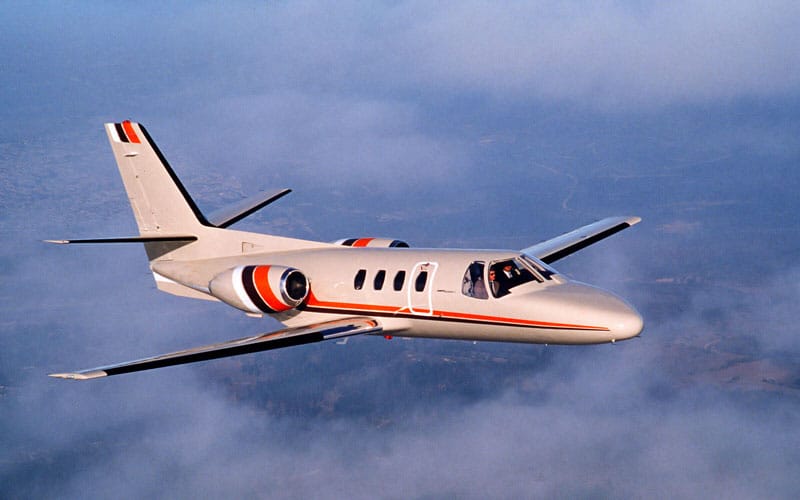
The Cessna Citation II and Citation Bravo
Expanding on the original design, the Citation II, Model 550, grew into an 8 passenger (+2 crew), 5000 lb fuel capacity, 2500 lbf thrust per engine, tenable business jet. I earned my type rating in this one, and the passengers I flew fought over who had to sit in the 8th/belted potty seat. I loved the 340 degrees of visibility and the straightforward philosophy of the systems and design. It was simple, intuitive, reliable, and since I was flying out of a field that’s longest runway was 3,900 feet (at the time), this airplane could land and take off on a dime, even during a Minnesota winter or hot summer.
The only weird frustration I had with this airplane is that the avionics cooling fan would blow behind the panel, across the windshield and, due to the internal aerodynamic windshield design, right into my eyes. It wasn’t something you could turn off or adjust. The airflow was enough to constantly dry out my eyes, but wasn’t enough to help alleviate any condensation build up on the inside of the windshield. Descending into someplace like Gulfport, Mississippi (regular clients), it would literally be raining inside the airplane.
The condensation would accumulate so fast and heavy, it turned IFR inside the airplane so the copilot always carried a towel to clear away the dew. The chief pilot and I tried everything, to no avail. It didn’t happen in the later models I flew, and it might’ve been a quirk with this particular airplane, but given all that could go wrong, this was just a minor annoyance – and we had the cleanest windshield on the ramp.
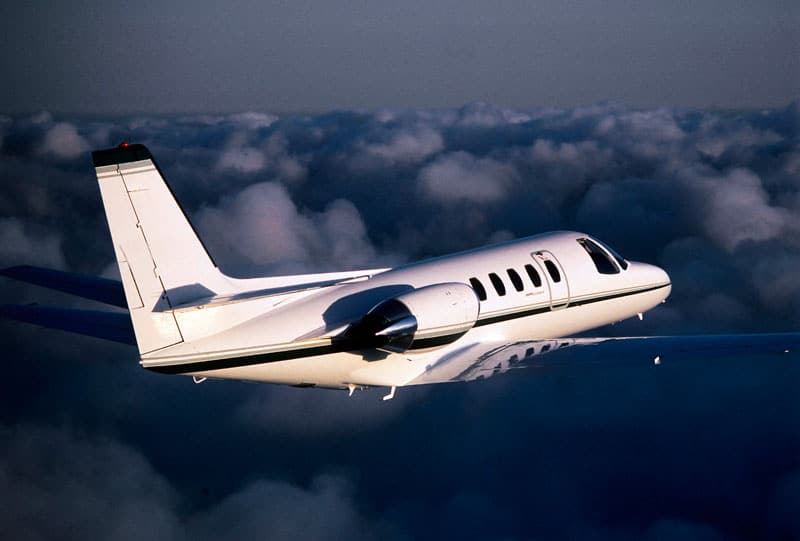
I also flew the Citation S/II which came after the single pilot certified Citation II/SP. The S/II (I know, the numerals can be confusing), had a little more power, a little more room (11 people max) but the biggest visible change was the removal of the boots from the leading edge of the wings and tail in exchange for the TKS type anti-icing (weeping wing) system in addition to bleed air. Since I was flying in the Midwest, we used this system often and I have to admit, we had some trouble with it. There were patches where the fluid didn’t come through so we had areas of ice that stayed on the leading edge.
Also, if the system was used, it tended to gum up and stay sticky on the leading edge so you had to make sure you didn’t brush up against it because, during a four-day trip, I could turn my underwear inside out and backwards, but I couldn’t do that with my uniform jacket.
After 10 years of the Citation II and S/II, the Citation Bravo was born. It had the basic II airframe, but the landing gear changed into the pilot forgiving trailing link configuration. In order to keep the pilots entertained, they also upgraded the standard avionics suite into the Honeywell Primus 1000 glass cockpit.
Cessna Citation V
I’m sure there is a good reason, but the next model Citation was named the V (five, not the letter, Model 560). Yes, the III still needed to be born, and the IV was a proposed upgrade that Cessna canceled, so they continued to use the Citation II design, but they stretched it, put more powerful engines on it, and put in two primary flight displays and one multifunction display in the cockpit. The Citation V then gave birth to the Ultra and Encore.
Cessna Citation III, VI, VII and Cessna Citation X
Itching for a new design, the Citation III, VI, and VII were a warm up for the Citation X (CE 750). Pete Hearn, a 25-year corporate pilot currently flying the Falcon 7X remembers the progression of Citation and his “Slowtation” time with fondness. “I think most any corporate pilot, at the very least, got their start in a CE500 or 550 and owe Citation for their basic systems knowledge for any other jet they’ve flown since. I covet my CE525S rating. For contrast, I also flew the Citation X (CE 750) which destroyed the Slowtation stigma.” The X is the fastest civilian aircraft in the world since the retirement of the Concorde. It’s for the 1% of the 1% who don’t mind spending $5,800 (fixed & direct) / hour or the $23M price tag.
Cessna Citation Excel, Citation Sovereign, Citation Jet, Citation Mustang
Trying to please the rest of the business jet market, the Citation Excel (560XL, ELS, ELS+) was created which used a shortened Citation X fuselage combined with the V Ultra’s straight wing and tail, but used new PW545A engines and remained a stand-up cabin. They stretched the fuselage and swept the wings back and kept the standup cabin to create the Citation Sovereign (Model 680).
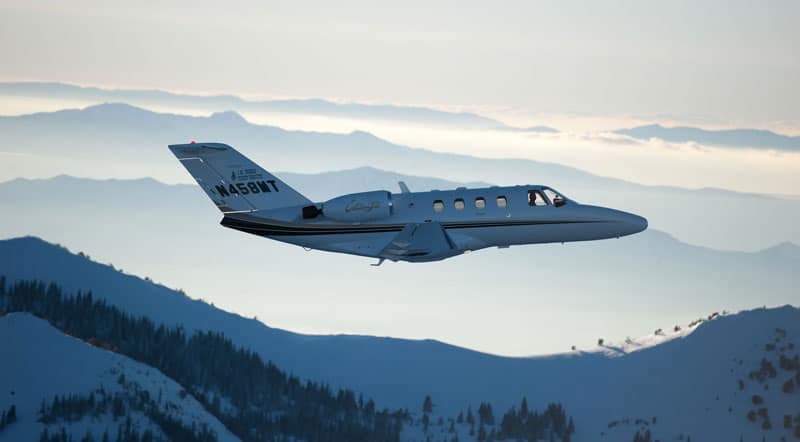
Coming full circle, the model 525 Citation Jet was launched in 1989 as a replacement for the Citation and Citation I market. Even though it was replacing its parents, the CitationJet was an all-new aircraft which included a supercritical laminar flow wing, a new T-tail, a lowered center aisle, two Willams FJ44 turbofans, EFIS, and single pilot certification. Variations include the CJ1, 2, 3 and 4.
With a shrinking economy, Cessna aimed for the very light jet of business jets with the Mustang which came out in 2006. It combined the comfort and features of a larger business jet, smooshed into a nimble 5 passenger jet that has exceptional short-field performance, but can still jump over the weather.
Citation Latitude and Longitude
Rounding out the most current generation is the Citation Latitude (with the Longitude, of course, a planned pregnancy for a few years later) which fills the niche in the mid-size business jet market. A pilot with a Model 680 rating (Sovereign) only needs differences training to fly the Latitude, they’re that close in design. With a due date in 2017, the Cessna Citation Longitude will fit into the super mid-size business jet category. It looks fast and sleek because it is. Measuring 73 feet from nose to tail and 67 feet from wingtip to wingtip, it’s the child of well-engineered parents who have traveled the world, gained knowledge with every flight hour, and who prove on a daily basis the beauty that comes from the mind of engineers.

In Conclusion
Throughout all the changes the Cessna Citation has gone through, the thread that ties them all together is the idea of simply making a good airplane even better. The answer hasn’t been to make the systems more complicated. It has been to make them simpler by taking each system, focusing on the strengths, and putting the positive results into the next design. Add to the mix a company that pays attention to their market and anticipates the next demand, and you have an aviation family with a proven safety record that will be around for generations to come.
Featured Image: Citation Jet, Taken by Disciples of Flight’s Jim Hoddenbach






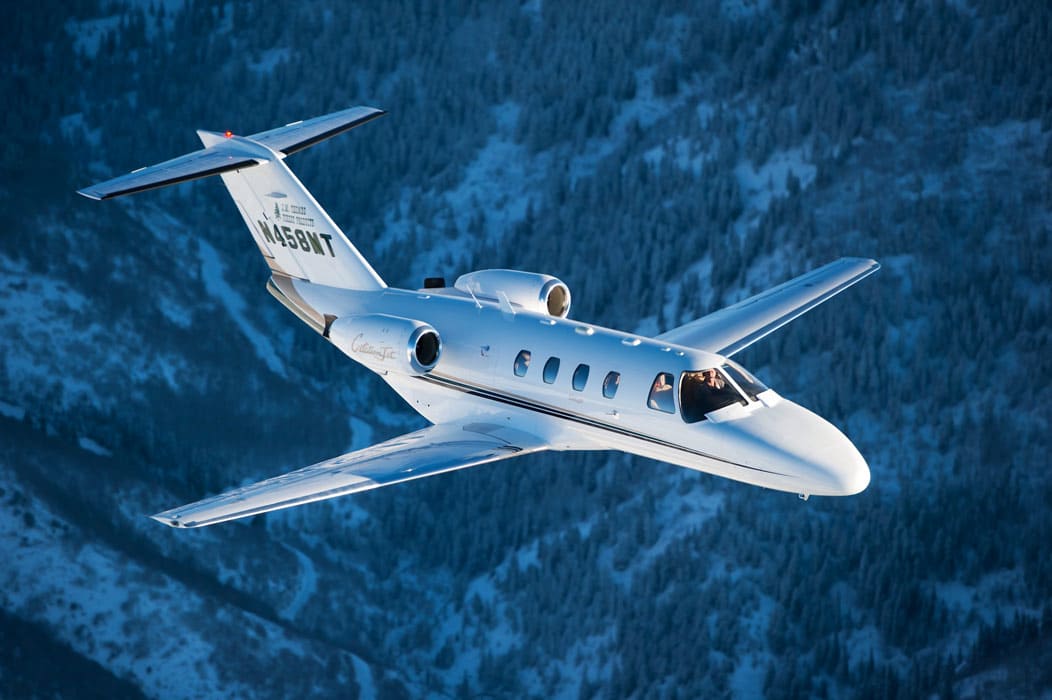




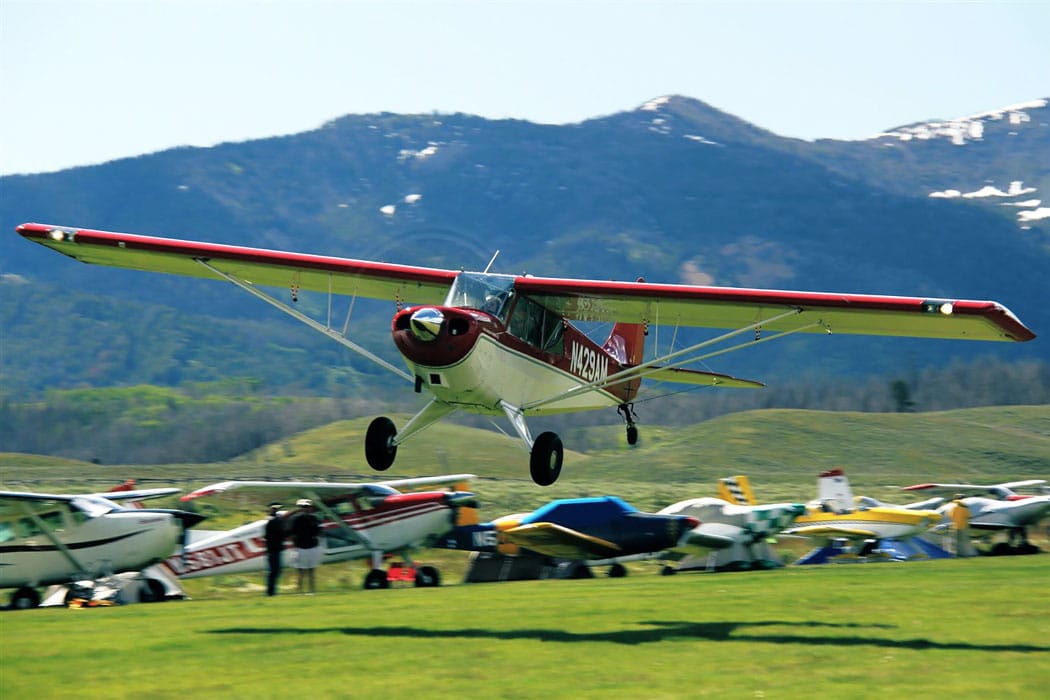
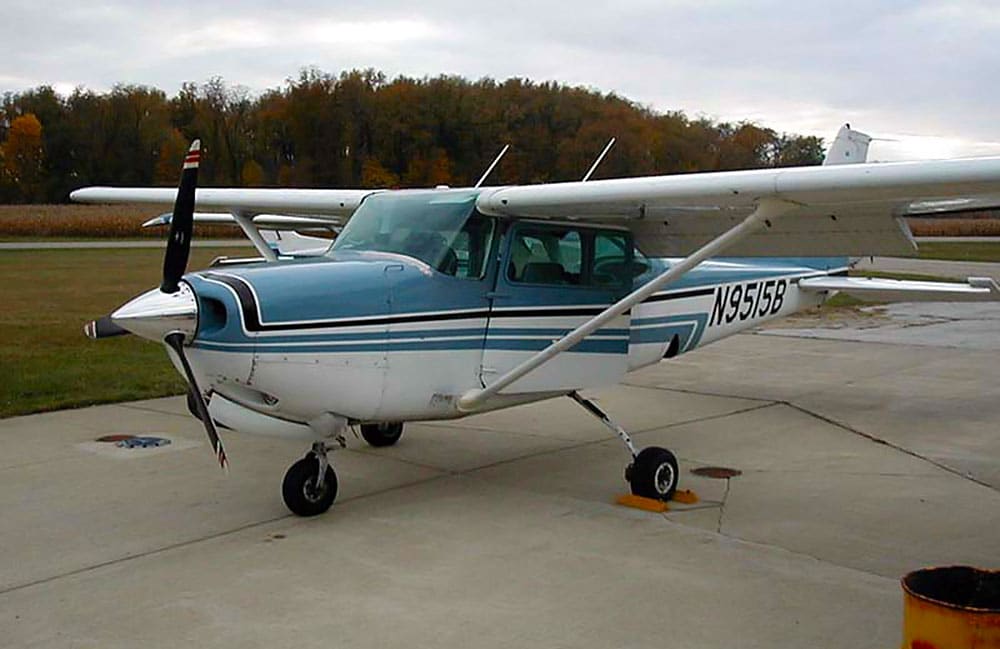

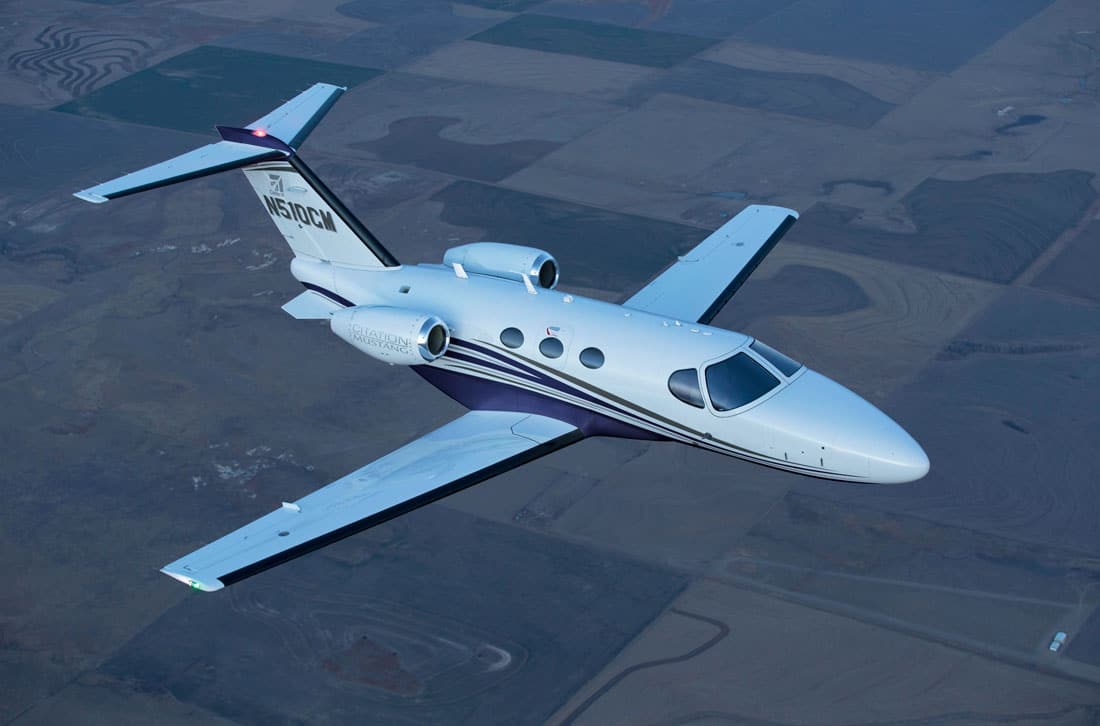
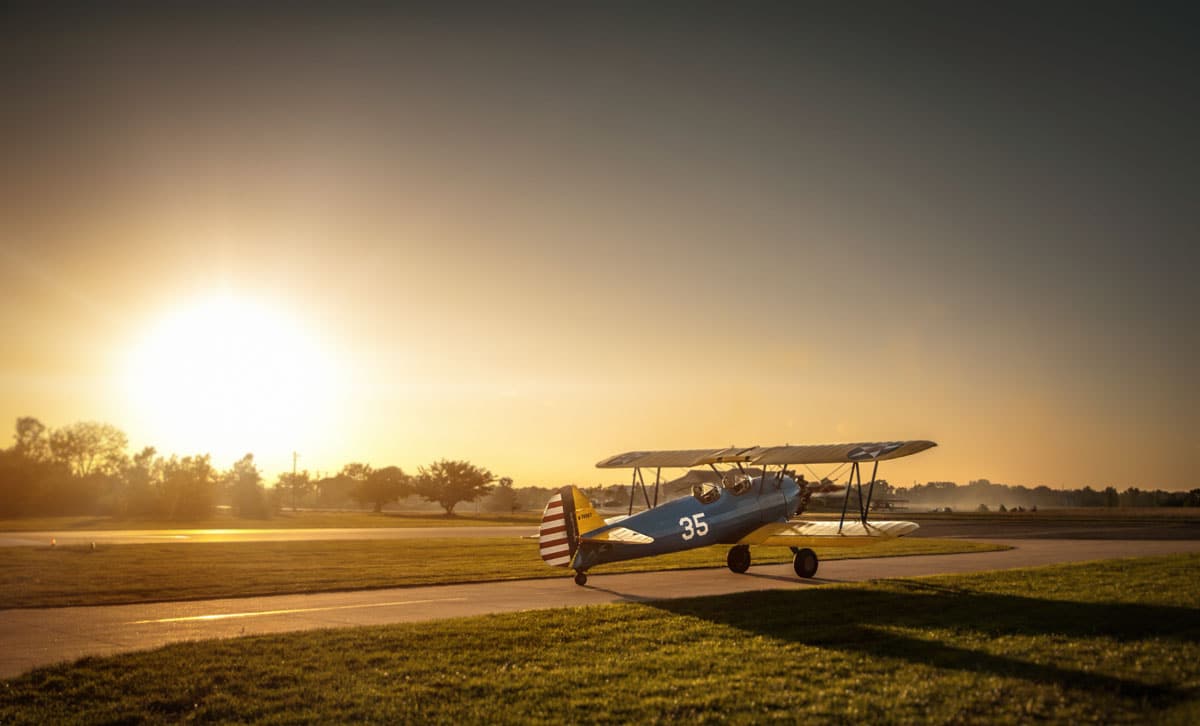
Thank you for the excellent guide to the Citation family . It used to be easy telling them apart , but they
now take a good eye for some of the models ..
1. The Cation X+. Is the fastest Corporate jet. The top speed is about 0.935 Speed of sound
Still is fastest Corporate private passenger plane is fastest of all Cessna private Jets Planes too. Do you agree. Sir.or Mam..
1. The Fastest Gulfstream. 700 Private jet is private Corporate jet is Fastest I on Mack number is record speed is, 0.99 Speed of sound is maximum speed too. Do you agree. Sir or Mam.